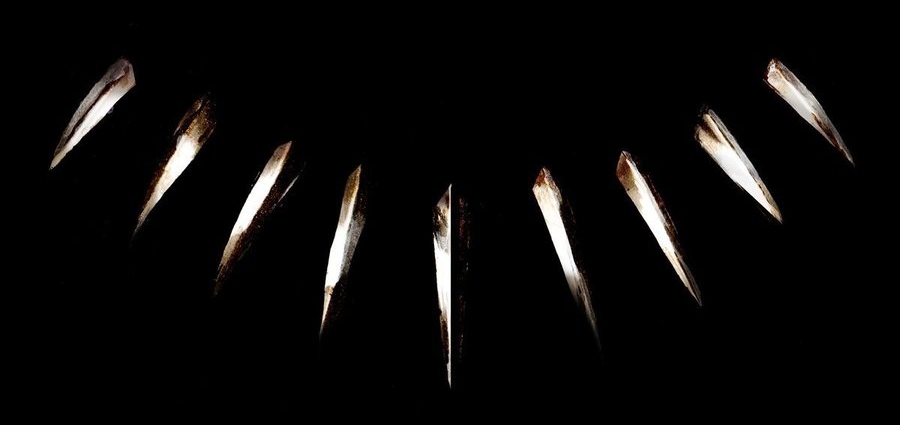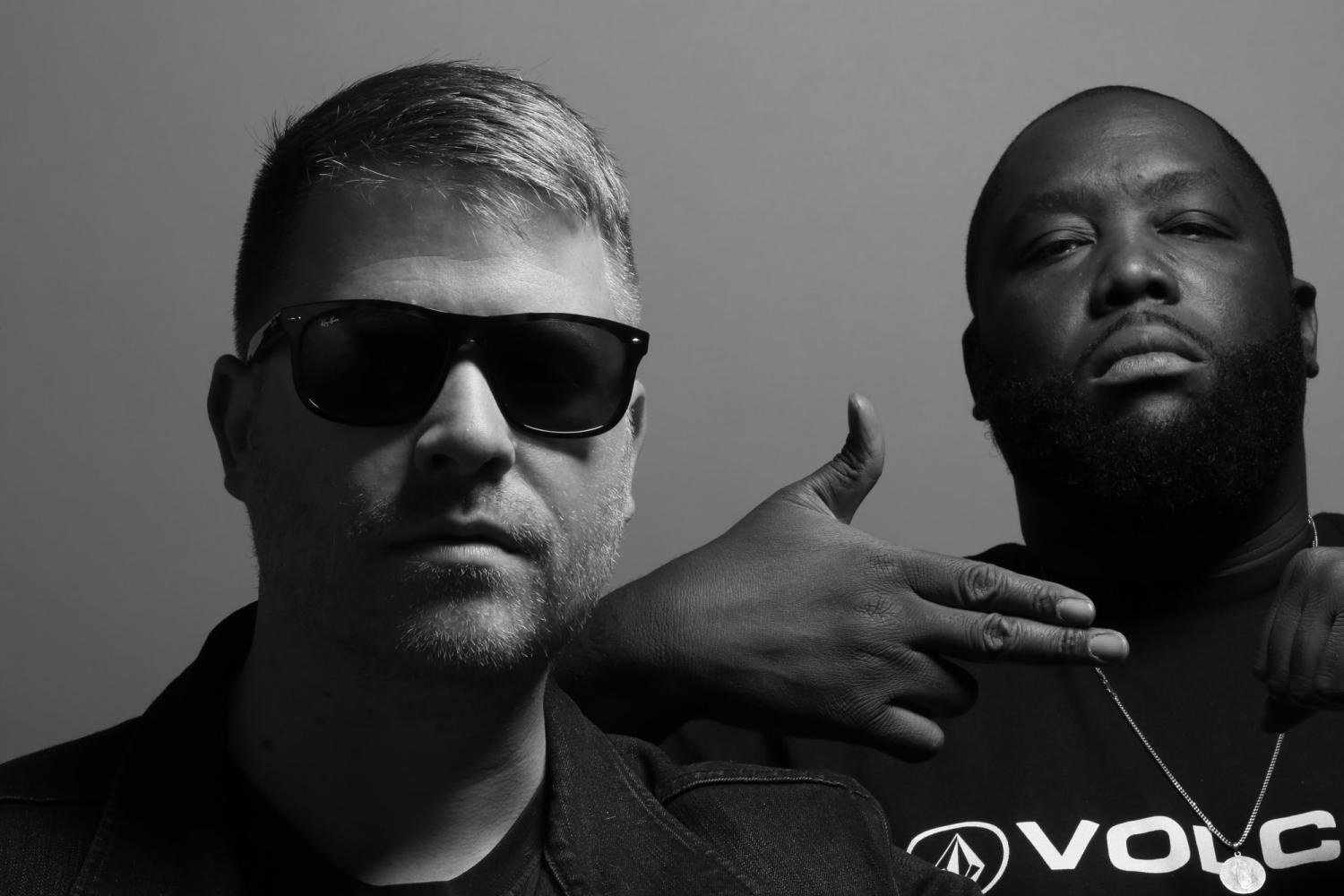Hip-Hop Is Our Vibranium
/By Dr. Joycelyn Wilson
Since its release on February 9, the wonderfully curated “Black Panther, the Album” has remained at No. 1 on the Billboard 200.
Leading up to the soundtrack’s release, “Legend Has It” — produced by the interracial rap duo Run The Jewels — was licensed as the sonic backdrop for the “Black Panther” movie trailer. The song and trailer teased us during the 2017 NBA Finals, introducing RTJ to audiences who knew nothing about them — like the students at Atlanta’s Ron Clark Academy, who burst into a dance set after learning they’d get a chance to see the Marvel movie. The song is recognized for Killer Mike and El-P’s futuristic riffs and exhortations to “step into the spotlight.”
“Legend Has It” also provides the soundtrack for the “Black Panther” Lexus commercial, where King T’Challa, his sister Shuri, and members of the Dora Milaje drive the LS 500 F Sport to secure some stolen vibranium.
All of this multilinear storytelling and rap-music marketing is layered with hip-hop’s African roots, its Cali sensibilities, and its Southern aesthetics. Together, they contribute to the ongoing box office success of the film, which is fast approach $1 billion in global ticket sales.
The music of “Black Panther” makes clear that hip-hop itself is the vibranium of the time.
I find vibranium — the fictional metal of Wakanda — a useful cultural metaphor when I have to explain hip-hop music to the uninformed. For more than 40 years, it has been a medium to represent black pain, interpret joy, and celebrate resilience. The power of the precious metal and the challenge to keep it “safe” is analogous to hip-hop’s power. That’s why hip-hop — “cultural vibranium,” if you will — holds a tight grip on listeners around the world. It influences cultural justice, and it ain’t going nowhere no time soon.
I plan to use “Black Panther, the Album,” RTJ’s “Legend Has It,” the movie trailer, and the commercial as examples for students in my “Science, Race, and Technology” course at Georgia Tech — a course taught using black media and hip-hop-inspired artifacts to explore the geopolitics of culture.
RUN the jewels' "Legend Has it" became background music for the "Black Panther" movie's trailer and commercial tie-in with lexus.
Pronounced “vibe + brain + ium,” the metal is produced underground by the Wakandan people. It is the country’s greatest resource — not at all unlike the role hip-hop has played for so many African descendants throughout the American South and beyond. Vibranium’s power rests in its ability to absorb sound and create kinetic energy. Its molecular structure is the primary source of technological innovation and weapons creation. The more energy vibranium absorbs, the stronger the vibes bind together. The stronger the bonds, the tougher it is to break its force, therefore creating the soul of energy necessary for the preservation and advancement of Wakandan culture.
In the legend of the Black Panther, this is exactly why colonizers want in: to make a commodity out of vibranium (like hip-hop) and sell it on the market to the highest bidder, ultimately diminishing its value. Hence, Wakanda puts up a front as a “Third World country” known for its “textiles, shepherds, and shiny clothes” to keep colonizers out, so their vibranium is left to grow untainted by outside influence.
Similarly, keeping hip-hop “indigenous” and free from exploitation and misuse is by far its greatest challenge. Black culture and music has battled to keep its soul since African descendants first set foot on Southern soil.
Kendrick Lamar is up to this challenge. He’s T’Challa right now! Like RTJ, he’s one of the “wokest” MCs, as indicated in the politics of his lyrics and his creative leadership on the “Black Panther” album. He weaves together Afro-trap aesthetics, resilience ideologies, and hood narratives, making them fundamental to the film’s storytelling. And through the album, we get to embrace Wakanda as a non-fictional African home — at least in our imaginations as the music plays. A place where advancement is possible for everyone, even Everett K. Ross, the white agent who underestimates the kinship and scientific innovations of the Wakandans. Through the soundtrack we get more access to the characters, how they came to be, and how their stories apply universally — especially to African-Americans descended from enslaved Africans.
What is imaginary in the film becomes real in the music and lyrics.
Kendrick lamar is the creative force behind "Black panther, the Album."
Fourteen songs create the soundtrack’s version of vibranium. The album weaves us through a multilinear story of two kings: first cousins King T’Challa and Erik Killmonger. In classic Lamarian style, the album works like an audible film that begins with the sound of a match striking just before “Black Panther,” the story of King T’Challa, starts. Through the flow of six songs — including “All the Stars,” “X,” which features Saudi and Atlanta trap star 2 Chainz, and “The Ways” — Lamar and a gang of new and not-so-new artists and producers tell an action-packed hero’s journey through themes of love and loss woven into the sounds of African drum syncopations, call-and-response, chants and whistles, and ideologies of trap music ranging from royalty to racism to resilience. “Opps,” featuring Vince Staples and Yugen Blakrok, is used in the film during a street fight. The 808 drops in “Opps” are just as intoxicating as they are in songs like Future’s “Mask Off” or Kanye West’s “Amazing” featuring Jeezy. However, the lyrics to the song provide a deeper exploration of the mindset of T-Challa and his rage against the machine.
With “Paramedic!” we get the revenge story of Killmonger, the illegitimate cousin who grew up disconnected from his father and family, abandoned to the hoods of Oakland, California. In the comic strip, he’s educated at MIT. In the film, he is also an assassin set on using vibranium to arm the hood with the technology to fight systemic racism and brutality. He puts me in the mind of Tupac Shakur. In the soundtrack, he represents the stories of many intelligent black men left to fend for themselves in a society structurally designed to trip them up.
“King’s Dead,” produced by Mike Will Made It, is one of my favorites — by far the hit of Killmonger’s story arc. If viewed through the eyes of the film, the song represents the villain’s mindset after he thought he had killed T’Challa, the person he needed to defeat to avenge his father’s death. Featuring Future and Jay Rock, the crunk repetitions are layered over drum syncopations of macho hustle flex. The “King’s Dead” video, directed by Dave Free and Jack Begert, is an over-the-top kaleidoscope of frames: Lamar and Jay Rock sitting in palm trees eating Mexican corn; getting a haircut in the barbershop, throwing confetti inside the barbershop; tatted-up, cornbread-fed women; even a whirl of white, Wall Street guys shuffling paperwork. Lamar sits with his feet on a desk and a necktie around his head. Future sits to his left, draped in diamonds and gold. On the right, Jay Rock, in a suit, does the Bankhead bounce. It does make sense for them to be standing on top of buildings in the middle of the city — declaring “miss me with that bullshit” and “I gotta go get it” four times over. It ends with African yodels before transitioning into “Redemption,” featuring Zacari and Durban artist Babes Wodumo. Like the movie, the soundtrack detaches black sisterhood from Western versions of feminism and presents black women as their own protectors and decision makers.
At the end of “Seasons,” Lamar shifts into act three of the album. He announces, “I am T’Challa. I am Killmonger. One world. One God. One family. Celebration.”
The entire soundtrack, curated by Lamar, is Wakandan vibranium in sound. It blends all the geographic Africanisms of hip-hop culture — from Southern trap to West Coast funk to East Coast lyricism — as a celebration of African heritage. Just over a dozen songs told in three acts, the album is an Afro-futuristic endeavor of optimism, steeped in universal trap ideologies.
It uses hip-hop as the “precious metal” that evokes cultural memory and unity across colonized ideas of difference and separation. The soundtrack represents the indigenous power of hip-hop’s movement to seek royalty and kinship in brothers and sisters regardless of their circumstances, even though they are misunderstood to the outside world. It tells us there is a bit of T’Challa and Killmonger in us all.




